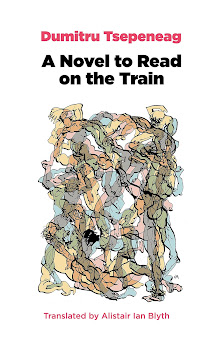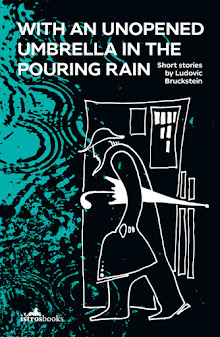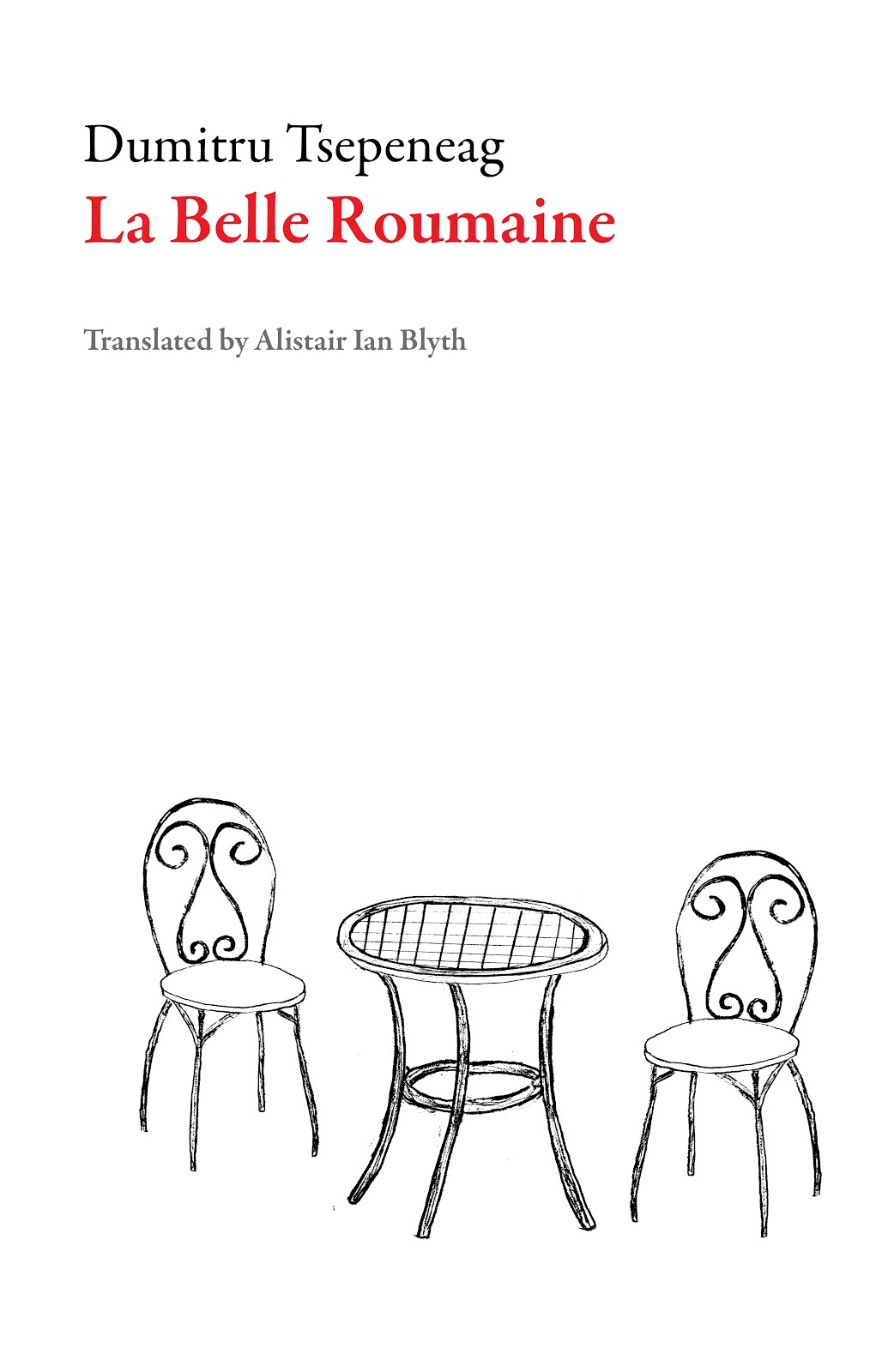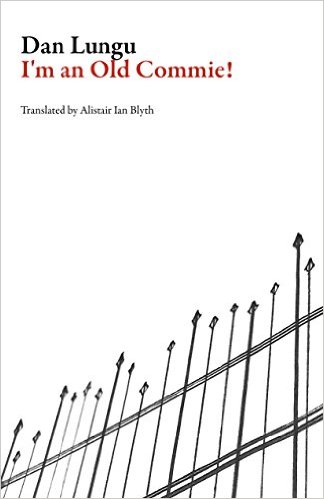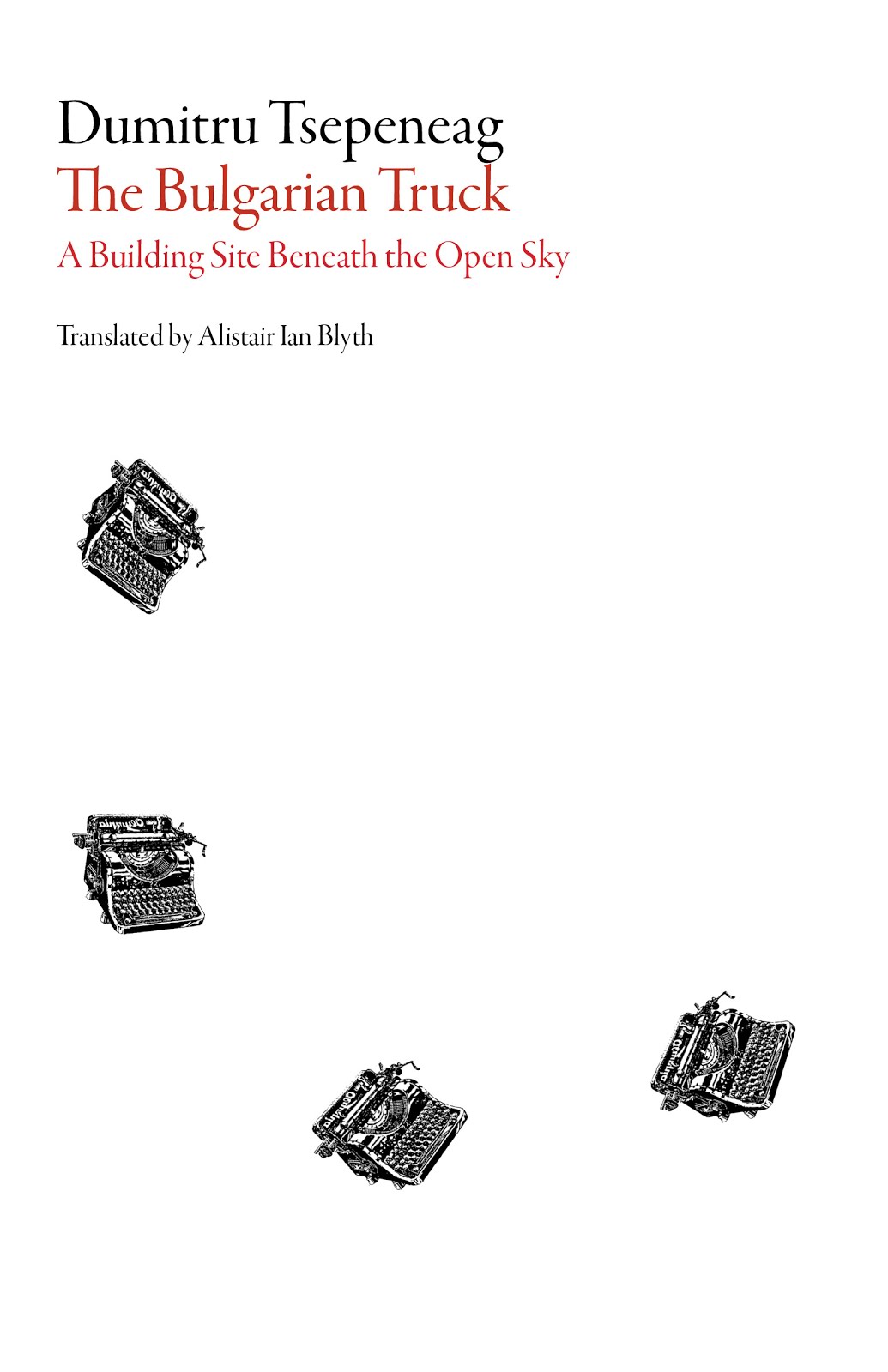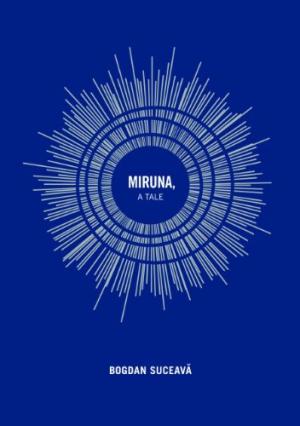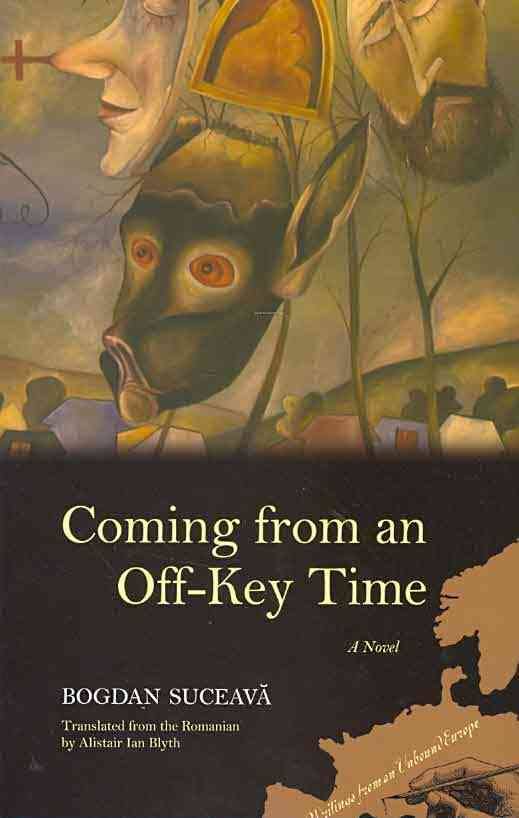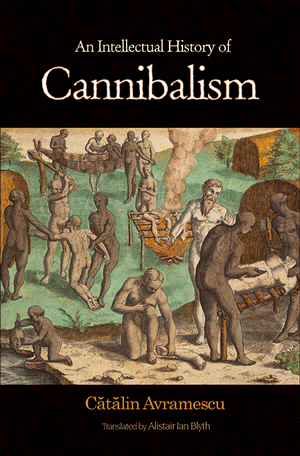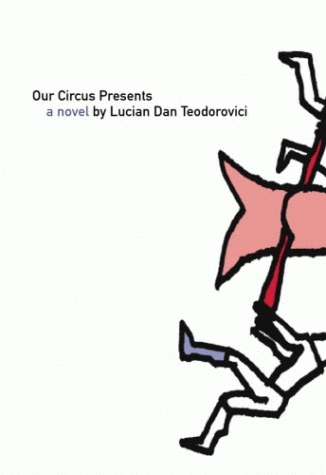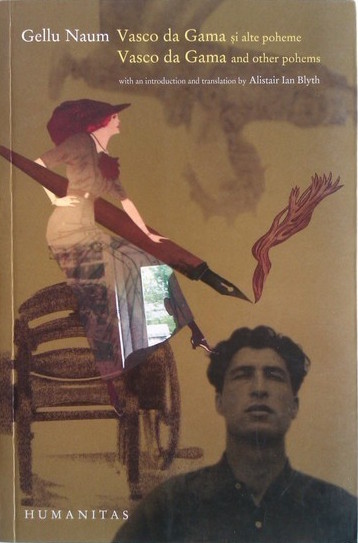
1:1 at the Romanian Pavilion, Venice Architecture Biennale, 2010. Installation created by Romina Grillo, Ciprian Rășoiu, Liviu Vasiu, Matei Vlăsceanu and Tudor Vlăsceanu
Image: Dezeen Design Magazine, 3 September 2010

Image: Dezeen
Image: Dezeen Design Magazine, 3 September 2010
De Nihilo
When confronted with an empty space, we might ask ourselves what exactly it is that is not there. Something is not there, which is to say, nothing is there. As Henry Fielding puts it in his “An Essay upon Nothing” (1743), “as Nothing is not Something, so every thing which is not Something, is Nothing; and wherever Something is not, Nothing is.” But the statement “Nothing is there” ineluctably leads to a logical dead-end, an aporia: for, if nothing “is”—if “nothing” has being—then it is no longer “nothing” but rather “something”.
The paradoxes of “nothing” and “not-being” are as old as philosophy itself. They are a subversive discourse against which philosophy is helpless to legislate or defend itself. For, as soon as speculative thought postulates “being”, it is a dialectical inevitability that “not-being” will then stake its paradoxical claim to existence. In Plato’s dialogue the Sophist, the anonymous Eleatic Stranger, thus himself a nemo or nobody, a species of nullus and ultimately nihil, warns Theaetetus to turn from the way that leads to thinking not-being is, before himself becoming lost in a maze of reasoning about the possibility of false statements. In Greek, false statements are those that “say what is not” (similarly, Swift’s ultra-rational Houyhnhnms have no notion of falsehood, and Gulliver is only able to explain it to them as “the thing which is not”). But if a statement says nothing, if it predicates what is not, then it is no longer a statement, an adfirmatio, and so there can be no false statements. Another aporia.
Whereas the Greeks laboured under a horror vacui, imagining that primitive matter must somehow have always existed before it was moulded into the cosmos by a divine demiurge, for the scholastics God’s creatio ex nihilo conferred upon “nothing” the privileged status of a primordial “something”. For example, in the Epistola de Nihilo et Tenebris (Letter on Nothing and Shadows) by ninth-century English monk Fredegisus (also known as Fridugisus, Fredugisus, Fridigisus, Fridogisus, Fridegisus, Fridugusus, Frudigisus etc.), the answer to the question “nihilne aliquid sit, an non” (whether nothing is something or not) is found to be affirmative. Among the series of logical arguments he provides is the following: “Omnis significatio est quod est. Nihil autem aliquid significat. Igitur nihil ejus significatio est quid est, id est, rei existentis” (Every signification is what it is. But ‘nothing’ signifies something. Therefore the signification of ‘nothing’ is what it is, that is, [the signification] of an existing thing) (Migne, Patrologia Latina, 105: 752-3). Moreover, given that according to the sacred mysteries God created earth, air, water, fire, light, the angels and man’s soul “out of nothing”, nothing is not only something, but also a great and particular something (magnum quiddam).
Having been elevated to this primordial God-given dignity, nihil goes on to be the subject of several mediaeval (parodic) sermons. Later, with the revival of the spoudogeloion/joco-serium tradition in the Renaissance, it becomes the subject of countless epideictic encomia, which paradoxically demonstrate its pre-eminence. The most important of all these, and the source of countless imitations, was the Laudatio Nihili of Johannes Passeratius (1534-1602), where we find that Nothing is more precious than gold and gems (“Nam Nihil est gemmis, Nihil est pretiosius auro”), Nothing is more beautiful than a watered garden (“Nihil irriguo formosius horto”), Nothing is loftier than the stars (“Nihil altius astris”), Nothing is more useful to the human race than the art of healing (“Humano generi utilius Nihil arte medendi”), and so on. When Passeratius goes so far as to say that Nothing is ultimately greater than Jove (“Nihil est Jove denique maius”), praise verges upon blasphemy, however. Such daringly blasphemous paradoxical permutations are also on display in a tractate called De Nihili Antiquitate (included in the Amphitheatrum Sapientiae Socraticae Joco-Seriae (1619) of Caspar Dornavius), composed by P. Aemilius Portus (1550-1614/15), where we find that Nothing is more ancient than Eternal God Himself, because Nothing was created before God (“Aeterno Deo Nihil antiquius [est]. Quia Nihil creatum est ante Deo”). Ultimately, however, the nihil paradox can always be rescued from blasphemy by its amphiboly: if nihil is read as a pronoun rather than as a noun, as a significatio, as Fredegisus would have it, then the statement that nothing is greater than God becomes the definition of orthodoxy itself.
In 1608, thus at around the same time as the De Nihili Antiquitate, a certain Cornelius Götz delivered a discourse on Nothing before a learned assembly in Wittenberg, presided over by Rudolf Goclenius senior (the great humanist philosopher and inventor of the terms “ontology” and “psychology”). Published in Marburg, the full title of the work is Disputatio de Nihilo, quae non est de Nihilo, Vagans per omnes disciplinas (Disputation on Nothing, which is not about Nothing, Ranging through all the Disciplines). The treatise explores the Greek and Latin etymologies of nothing, the definition of nothing (Modus sine re, cuius est modus, a quo pendet essentialiter, est nihil, id est, esse non potest—The mode without reality, from whose mode it is that it essentially hangs, is nothing, that is, it is not able to be), the species of nothing (nihil absolute and nihil negativum or non ens per se), the theological significations of nothing (for St Paul, an idol is nothing (Idolum nihil est), devoid of any numinous power, while for St Basil, man is nothing by reason of his matter and great by reason of his dignity (homo nihil est propter materiam et magnus propter honorem)), the physics of nothing (nothing can be made from nothing—Ex nihilo nihil fit, after Aristotle), God’s creation out of nothing (Creatio est constitutio essentiae ex nihilo—the creation is the establishment of being out of nothing), evil as a privation of being and thus nothing, the differences between annihilation (recidere seu transire in nihil—to fall back or pass over into nothing), corruption, dissolution and transubstantiation, and much more. To the forty-six propositions of the disputatio proper are appended a number of miscellaneous metaphysical, theological, physical, logical, rhetorical and grammatical questions and answers. Under the heading of Logic, for example, Götz puts forward the following conundrum: “Principium materiale mundi est non nihil: Enunciatum affirmatum falsum est. Principium materiale mundi non est nihil. Enunciatum negatum verum est” (The material origin of the world is non-nothing. The proposition is false when asserted positively. The material origin of the world is not nothing. The proposition is true when asserted negatively).
The jesting-serious wisdom of the Renaissance, which can turn even such a seemingly sterile subject as Nothing into a dazzling rhetorical display of wit and learning, will later give way to metaphysical and existential angst, to fear of the néant. In Heidegger’s Einführung in die Metaphysik (1935, published 1953), the question posed by Leibniz—“Why is there something rather than nothing?”—becomes the inevitable Grundfrage, which looms equally in moments of despair, joy or boredom: “Warum ist überhaupt Seiendes und nicht vielmehr Nichts” (Why are there beings-that-are and not nothing?). For Heidegger, however, the second part of the question is redundant. Even to speak of “nothing” is a grave offence against the logos, against logic, a reckless act that undermines all culture and thought, allying itself with nothingness in the destructive will to nihilism. Therefore, he erases it, consigning the question about nothing to nothingness, and asks simply, “Why are there beings-that-are?” In Was ist Metaphysik, Heidegger tries to find a way around the angst-inducing implications of using “nothing” and “is” in the same sentence, and comes up with “Das Nichts selbst nichtet” (The nothing nothings itself). Rudolph Carnap famously cited this as an example of metaphysical nonsense, but Henry Fielding perhaps best described the nature of this kind of discourse two centuries earlier in his “An Essay Upon Nothing”: “When a Bladder is full of Wind, it is full of Something; but when that is let out, we aptly say, there is Nothing in it. The same may be as justly asserted of a Man as of a Bladder. (…) It is at least possible for a Man to know Nothing. And whoever hath read over many Works of our ingenious Moderns, with proper Attention and Emolument, will, I believe, confess, that if he understands them right, he understands Nothing.”
However, the very word “nothing” does undeniably incorporate an existential premise. No-thing is the non-existence of a thing, after all. Nihil can only be defined by reference to aliquid, a something (else). In etymological terms, this existential premise would seem to be linguistically universal. But what it is that nothing is not varies according to different languages. In Greek, “nothing” is ouden, literally “not-one” (ne unum quidem), or, in the language of philosophy, to mê on, “not-being” (non ens). In Latin, nihil derives from hilum, “a tiny thing”, “a thing of no importance”, “a trifle”. The Russian nichto is a “not-what”. To take a very interesting non-Indo-European example, in Georgian (Kartveli) “nothing” is araperi, literally “not-colour” (ne color quidem). In the phenomenal world, every thing has a colour and it is impossible to imagine any thing without a colour. Even transparent things—water, air, glass etc.—reflect the colours of other things.(*) They exist in space against a background of colour, and it is impossible to picture them mentally in a vacuum, in their pure colourless transparency. Any empty space is thus imbued with borrowed colours. Only an unimaginable metaphysical non-space, a ne locus quidem outside space and being, would truly be devoid of any colour, be it even only black. Only the non-space of non-colour would truly be nothing.
Finally, the etymon of the Romanian nimic (“nothing”) is nemica, from the Latin ne mica (not a crumb, not a morsel). It thus echoes the Latin ne hilum. The Romanian verb a nimicnici (“to annihilate”), and its variant a nimici, might be translated as “to reduce something to less than its ultimate crumb of matter”. The mica, which refers to the smallest possible particle of matter (cf. the hilum, which can also refer to the moral unimportance of a thing; Lucretius uses ne hilum in the sense of “not a whit”, “not a jot” and hilum in the sense of “smallest part (of a thing)”), is thus the final threshold between “something” and “nothing”. In contrast to the German das Nichts, which is perhaps the starkest nothing of all—a naked “not”— the Romanian nimicul (the nothing, nothingness, not-a-crumb-ness) is peculiarly substantial; it incorporates within itself the trace or echo of a physical something, a tiny crumb which is no longer there or could never be there. Likewise, the empty space that is intrinsic to the 1:1 installation in the Romanian Pavilion at this year’s Biennale of Architecture in Venice is a means of articulating within space nimic, nihil, nichego, araperi, nothing, as a way of asking what is no longer there, what could have been there, what should be there.
When confronted with an empty space, we might ask ourselves what exactly it is that is not there. Something is not there, which is to say, nothing is there. As Henry Fielding puts it in his “An Essay upon Nothing” (1743), “as Nothing is not Something, so every thing which is not Something, is Nothing; and wherever Something is not, Nothing is.” But the statement “Nothing is there” ineluctably leads to a logical dead-end, an aporia: for, if nothing “is”—if “nothing” has being—then it is no longer “nothing” but rather “something”.
The paradoxes of “nothing” and “not-being” are as old as philosophy itself. They are a subversive discourse against which philosophy is helpless to legislate or defend itself. For, as soon as speculative thought postulates “being”, it is a dialectical inevitability that “not-being” will then stake its paradoxical claim to existence. In Plato’s dialogue the Sophist, the anonymous Eleatic Stranger, thus himself a nemo or nobody, a species of nullus and ultimately nihil, warns Theaetetus to turn from the way that leads to thinking not-being is, before himself becoming lost in a maze of reasoning about the possibility of false statements. In Greek, false statements are those that “say what is not” (similarly, Swift’s ultra-rational Houyhnhnms have no notion of falsehood, and Gulliver is only able to explain it to them as “the thing which is not”). But if a statement says nothing, if it predicates what is not, then it is no longer a statement, an adfirmatio, and so there can be no false statements. Another aporia.
Whereas the Greeks laboured under a horror vacui, imagining that primitive matter must somehow have always existed before it was moulded into the cosmos by a divine demiurge, for the scholastics God’s creatio ex nihilo conferred upon “nothing” the privileged status of a primordial “something”. For example, in the Epistola de Nihilo et Tenebris (Letter on Nothing and Shadows) by ninth-century English monk Fredegisus (also known as Fridugisus, Fredugisus, Fridigisus, Fridogisus, Fridegisus, Fridugusus, Frudigisus etc.), the answer to the question “nihilne aliquid sit, an non” (whether nothing is something or not) is found to be affirmative. Among the series of logical arguments he provides is the following: “Omnis significatio est quod est. Nihil autem aliquid significat. Igitur nihil ejus significatio est quid est, id est, rei existentis” (Every signification is what it is. But ‘nothing’ signifies something. Therefore the signification of ‘nothing’ is what it is, that is, [the signification] of an existing thing) (Migne, Patrologia Latina, 105: 752-3). Moreover, given that according to the sacred mysteries God created earth, air, water, fire, light, the angels and man’s soul “out of nothing”, nothing is not only something, but also a great and particular something (magnum quiddam).
Having been elevated to this primordial God-given dignity, nihil goes on to be the subject of several mediaeval (parodic) sermons. Later, with the revival of the spoudogeloion/joco-serium tradition in the Renaissance, it becomes the subject of countless epideictic encomia, which paradoxically demonstrate its pre-eminence. The most important of all these, and the source of countless imitations, was the Laudatio Nihili of Johannes Passeratius (1534-1602), where we find that Nothing is more precious than gold and gems (“Nam Nihil est gemmis, Nihil est pretiosius auro”), Nothing is more beautiful than a watered garden (“Nihil irriguo formosius horto”), Nothing is loftier than the stars (“Nihil altius astris”), Nothing is more useful to the human race than the art of healing (“Humano generi utilius Nihil arte medendi”), and so on. When Passeratius goes so far as to say that Nothing is ultimately greater than Jove (“Nihil est Jove denique maius”), praise verges upon blasphemy, however. Such daringly blasphemous paradoxical permutations are also on display in a tractate called De Nihili Antiquitate (included in the Amphitheatrum Sapientiae Socraticae Joco-Seriae (1619) of Caspar Dornavius), composed by P. Aemilius Portus (1550-1614/15), where we find that Nothing is more ancient than Eternal God Himself, because Nothing was created before God (“Aeterno Deo Nihil antiquius [est]. Quia Nihil creatum est ante Deo”). Ultimately, however, the nihil paradox can always be rescued from blasphemy by its amphiboly: if nihil is read as a pronoun rather than as a noun, as a significatio, as Fredegisus would have it, then the statement that nothing is greater than God becomes the definition of orthodoxy itself.
In 1608, thus at around the same time as the De Nihili Antiquitate, a certain Cornelius Götz delivered a discourse on Nothing before a learned assembly in Wittenberg, presided over by Rudolf Goclenius senior (the great humanist philosopher and inventor of the terms “ontology” and “psychology”). Published in Marburg, the full title of the work is Disputatio de Nihilo, quae non est de Nihilo, Vagans per omnes disciplinas (Disputation on Nothing, which is not about Nothing, Ranging through all the Disciplines). The treatise explores the Greek and Latin etymologies of nothing, the definition of nothing (Modus sine re, cuius est modus, a quo pendet essentialiter, est nihil, id est, esse non potest—The mode without reality, from whose mode it is that it essentially hangs, is nothing, that is, it is not able to be), the species of nothing (nihil absolute and nihil negativum or non ens per se), the theological significations of nothing (for St Paul, an idol is nothing (Idolum nihil est), devoid of any numinous power, while for St Basil, man is nothing by reason of his matter and great by reason of his dignity (homo nihil est propter materiam et magnus propter honorem)), the physics of nothing (nothing can be made from nothing—Ex nihilo nihil fit, after Aristotle), God’s creation out of nothing (Creatio est constitutio essentiae ex nihilo—the creation is the establishment of being out of nothing), evil as a privation of being and thus nothing, the differences between annihilation (recidere seu transire in nihil—to fall back or pass over into nothing), corruption, dissolution and transubstantiation, and much more. To the forty-six propositions of the disputatio proper are appended a number of miscellaneous metaphysical, theological, physical, logical, rhetorical and grammatical questions and answers. Under the heading of Logic, for example, Götz puts forward the following conundrum: “Principium materiale mundi est non nihil: Enunciatum affirmatum falsum est. Principium materiale mundi non est nihil. Enunciatum negatum verum est” (The material origin of the world is non-nothing. The proposition is false when asserted positively. The material origin of the world is not nothing. The proposition is true when asserted negatively).
The jesting-serious wisdom of the Renaissance, which can turn even such a seemingly sterile subject as Nothing into a dazzling rhetorical display of wit and learning, will later give way to metaphysical and existential angst, to fear of the néant. In Heidegger’s Einführung in die Metaphysik (1935, published 1953), the question posed by Leibniz—“Why is there something rather than nothing?”—becomes the inevitable Grundfrage, which looms equally in moments of despair, joy or boredom: “Warum ist überhaupt Seiendes und nicht vielmehr Nichts” (Why are there beings-that-are and not nothing?). For Heidegger, however, the second part of the question is redundant. Even to speak of “nothing” is a grave offence against the logos, against logic, a reckless act that undermines all culture and thought, allying itself with nothingness in the destructive will to nihilism. Therefore, he erases it, consigning the question about nothing to nothingness, and asks simply, “Why are there beings-that-are?” In Was ist Metaphysik, Heidegger tries to find a way around the angst-inducing implications of using “nothing” and “is” in the same sentence, and comes up with “Das Nichts selbst nichtet” (The nothing nothings itself). Rudolph Carnap famously cited this as an example of metaphysical nonsense, but Henry Fielding perhaps best described the nature of this kind of discourse two centuries earlier in his “An Essay Upon Nothing”: “When a Bladder is full of Wind, it is full of Something; but when that is let out, we aptly say, there is Nothing in it. The same may be as justly asserted of a Man as of a Bladder. (…) It is at least possible for a Man to know Nothing. And whoever hath read over many Works of our ingenious Moderns, with proper Attention and Emolument, will, I believe, confess, that if he understands them right, he understands Nothing.”
However, the very word “nothing” does undeniably incorporate an existential premise. No-thing is the non-existence of a thing, after all. Nihil can only be defined by reference to aliquid, a something (else). In etymological terms, this existential premise would seem to be linguistically universal. But what it is that nothing is not varies according to different languages. In Greek, “nothing” is ouden, literally “not-one” (ne unum quidem), or, in the language of philosophy, to mê on, “not-being” (non ens). In Latin, nihil derives from hilum, “a tiny thing”, “a thing of no importance”, “a trifle”. The Russian nichto is a “not-what”. To take a very interesting non-Indo-European example, in Georgian (Kartveli) “nothing” is araperi, literally “not-colour” (ne color quidem). In the phenomenal world, every thing has a colour and it is impossible to imagine any thing without a colour. Even transparent things—water, air, glass etc.—reflect the colours of other things.(*) They exist in space against a background of colour, and it is impossible to picture them mentally in a vacuum, in their pure colourless transparency. Any empty space is thus imbued with borrowed colours. Only an unimaginable metaphysical non-space, a ne locus quidem outside space and being, would truly be devoid of any colour, be it even only black. Only the non-space of non-colour would truly be nothing.
Finally, the etymon of the Romanian nimic (“nothing”) is nemica, from the Latin ne mica (not a crumb, not a morsel). It thus echoes the Latin ne hilum. The Romanian verb a nimicnici (“to annihilate”), and its variant a nimici, might be translated as “to reduce something to less than its ultimate crumb of matter”. The mica, which refers to the smallest possible particle of matter (cf. the hilum, which can also refer to the moral unimportance of a thing; Lucretius uses ne hilum in the sense of “not a whit”, “not a jot” and hilum in the sense of “smallest part (of a thing)”), is thus the final threshold between “something” and “nothing”. In contrast to the German das Nichts, which is perhaps the starkest nothing of all—a naked “not”— the Romanian nimicul (the nothing, nothingness, not-a-crumb-ness) is peculiarly substantial; it incorporates within itself the trace or echo of a physical something, a tiny crumb which is no longer there or could never be there. Likewise, the empty space that is intrinsic to the 1:1 installation in the Romanian Pavilion at this year’s Biennale of Architecture in Venice is a means of articulating within space nimic, nihil, nichego, araperi, nothing, as a way of asking what is no longer there, what could have been there, what should be there.
Alistair Ian Blyth, from the exhibition catalogue

Image: Dezeen
(*) The Georgian araperi may be compared with the Romanian idiomatic expression de nici o culoare ("not at all", "in no way", "by no means"), which translates literally as "by not one colour".







